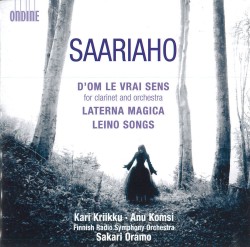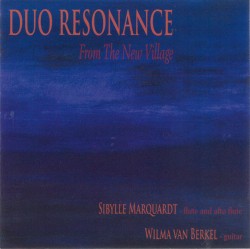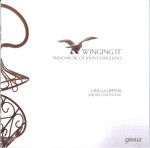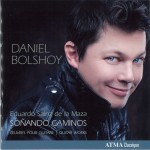As an accordionist since childhood, I have seen the popularity of my instrument rise and fall in a fashion similar to current money markets. The accordion is on a sharp rise again at the moment, with a number of new releases that feature its rhythmic and melodic sensibilities in a variety of styles.
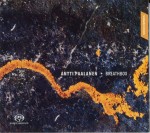 Finnish accordionist/composer Antti Paalanen showcases his enviable bellows control and minimalist compositional ideas in the solo release Breathbox (Siba Records SACD-1005). The Finnish landscape is depicted musically in tracks like the heavy long tones and looping grooves of Permafrost and the ethereal high pitched harmonies of Northern Wind. The tiny detailed tones of Mementos waltz are as touching as looking at one’s favourite keepsakes. Paalanen is an excellent instrumentalist fully in control. Many of the repeated musical ideas seem to be drawn from traditional folk melodies creating an exciting and accessible “cross-over” effect, though some lengthy passages, especially in Gaza, could use a bit of editing.
Finnish accordionist/composer Antti Paalanen showcases his enviable bellows control and minimalist compositional ideas in the solo release Breathbox (Siba Records SACD-1005). The Finnish landscape is depicted musically in tracks like the heavy long tones and looping grooves of Permafrost and the ethereal high pitched harmonies of Northern Wind. The tiny detailed tones of Mementos waltz are as touching as looking at one’s favourite keepsakes. Paalanen is an excellent instrumentalist fully in control. Many of the repeated musical ideas seem to be drawn from traditional folk melodies creating an exciting and accessible “cross-over” effect, though some lengthy passages, especially in Gaza, could use a bit of editing.
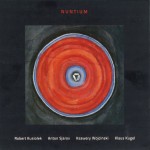 Accordionist Robert Kusiolek showcases his playing, compositional and electronics skills in Nuntium (Multikulti MPCC002). Along with Anton Sjarov, voice/violin, Ksawery Wojcinski, double bass, and Klaus Kugel, drums, etc., Kusiolek creates an atonal musical environment in seven chapters. The slow-moving vocal/violin improvisational mood of Chapter 1 sets the stage for a diverse range of ideas that is unbelievably coherent. Chapter 4, with its intricate conversations between the instruments, is the highlight. Each player is a star, with the accordion driving the jazzy music. The free improvisational feel of Nuntium adds to the unique sound of the accordion in this ensemble setting.
Accordionist Robert Kusiolek showcases his playing, compositional and electronics skills in Nuntium (Multikulti MPCC002). Along with Anton Sjarov, voice/violin, Ksawery Wojcinski, double bass, and Klaus Kugel, drums, etc., Kusiolek creates an atonal musical environment in seven chapters. The slow-moving vocal/violin improvisational mood of Chapter 1 sets the stage for a diverse range of ideas that is unbelievably coherent. Chapter 4, with its intricate conversations between the instruments, is the highlight. Each player is a star, with the accordion driving the jazzy music. The free improvisational feel of Nuntium adds to the unique sound of the accordion in this ensemble setting.
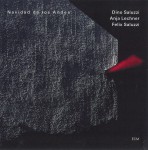 The bandoneon with its free reed mechanism, is a distant relative of the accordion, so the inclusion here of Navidad de los Andes (ECM 2204) is fitting. Bandoneonist/composer Dino Saluzzi breathes sonic beauty into this “Christmas in the Andes” ensemble collection. The excellent programmatic liner notes provide a guiding hand through the 11 tracks without getting lost in technical details, aiding the listener to envision the Christmas story in a personal way. From the arid, bleak opening track, many South American musical traditions (like the ever popular Tango) are brilliantly performed by Saluzzi, cellist Anja Lechner and tenor sax/clarinettist Felix Saluzzi.
The bandoneon with its free reed mechanism, is a distant relative of the accordion, so the inclusion here of Navidad de los Andes (ECM 2204) is fitting. Bandoneonist/composer Dino Saluzzi breathes sonic beauty into this “Christmas in the Andes” ensemble collection. The excellent programmatic liner notes provide a guiding hand through the 11 tracks without getting lost in technical details, aiding the listener to envision the Christmas story in a personal way. From the arid, bleak opening track, many South American musical traditions (like the ever popular Tango) are brilliantly performed by Saluzzi, cellist Anja Lechner and tenor sax/clarinettist Felix Saluzzi.
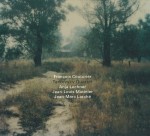 The Tarkovsky Quartet (ECM 2159) is the brainchild of composer/pianist François Couturier. His music, which is inspired by the work of the late filmmaker Andre Tarkovsky – thus the name of the quartet – draws upon his life and work. Couturier’s new age tonal music shifts slowly like a scene frozen in lush cinematography allowing Parisian accordionist Jean-Louis Matinier to sit on long held notes with solemn colour. Cellist Anja Lechner and soprano saxophonist Jean-Marc Larche add their own unique contributions to the mix. Though the impressionistic compositions are in the style of movie music, it is the collective improvisations on three tracks that are the highlights. Here the harmonic world opens to more punchy chords while accordion melodies race through florid legato lines and extreme staccatos.
The Tarkovsky Quartet (ECM 2159) is the brainchild of composer/pianist François Couturier. His music, which is inspired by the work of the late filmmaker Andre Tarkovsky – thus the name of the quartet – draws upon his life and work. Couturier’s new age tonal music shifts slowly like a scene frozen in lush cinematography allowing Parisian accordionist Jean-Louis Matinier to sit on long held notes with solemn colour. Cellist Anja Lechner and soprano saxophonist Jean-Marc Larche add their own unique contributions to the mix. Though the impressionistic compositions are in the style of movie music, it is the collective improvisations on three tracks that are the highlights. Here the harmonic world opens to more punchy chords while accordion melodies race through florid legato lines and extreme staccatos.
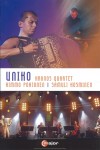 Now, literally, off to the movies. Uniko (Cmajor 707108) was written by Finnish rock star status accordionist/vocalist Kimmo Pohjonen and his colleague, electronics master Samuli Kosminen. The Kronos Quartet was introduced to Pohjonen’s music while on tour in Finland, and loved how he had expanded the possibilities of the accordion. All are featured in this concert film. There are lots of shots of fingers playing but the stark stage set and lighting supports the stark rhythmic explosiveness of the music. The looping musical ideas are perfect for the film idiom. Do not be misled by Pohjonen’s on-stage persona – his expertise on the accordion is solid. However, it always amazes me that nobody ever needs to turn a page…
Now, literally, off to the movies. Uniko (Cmajor 707108) was written by Finnish rock star status accordionist/vocalist Kimmo Pohjonen and his colleague, electronics master Samuli Kosminen. The Kronos Quartet was introduced to Pohjonen’s music while on tour in Finland, and loved how he had expanded the possibilities of the accordion. All are featured in this concert film. There are lots of shots of fingers playing but the stark stage set and lighting supports the stark rhythmic explosiveness of the music. The looping musical ideas are perfect for the film idiom. Do not be misled by Pohjonen’s on-stage persona – his expertise on the accordion is solid. However, it always amazes me that nobody ever needs to turn a page…
There is a vast world of music available for the accordion and it should be no surprise that in solo and ensemble settings the “squeezebox” keeps pushing and pulling its way into contemporary music.
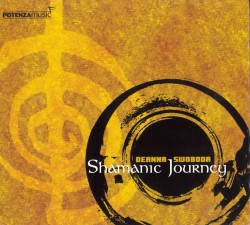 Shamanic Journey
Shamanic Journey

